You’re planning your webinar marketing strategy. Should you conduct your sessions on a weekday or the weekend? Would mornings work better or evenings? And what duration would work the best for engagement?
Here are the top webinar statistics answering the above questions and then some!
Recommended reading: 17 Top Webinar Software For 2021
1. Webinars Scheduled In The Morning Have A Relatively Higher Attendance Rate
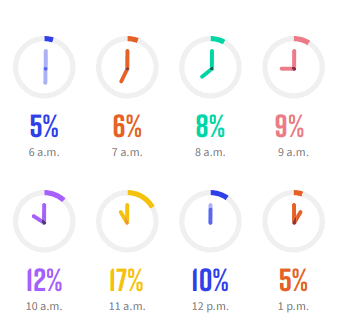
Timing plays a crucial role in the success of a webinar. According to On24’s report, the best time to conduct a webinar is at 11 a.m (PST) because people are most alert at this time.
But does this apply to every day, or does picking a particular day make a difference?
2. 28% Of Webinars Are Held On Thursdays
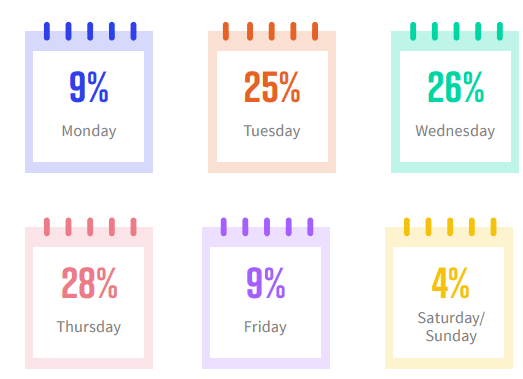
Studies suggest that Wednesdays and Thursdays are webinar days with attendance of 26% and 28% (On24). Monday blues do not let people attend such events. And Sunday is the king of the weekend. All jokes aside, people tend to be busier on Mondays and Fridays, and they want plenty of time to prepare themselves for the webinar, which makes the mentioned days ideal for it.
But can webinars even attract prospects? If yes, which industry has high success rates?
3. 68% Of Marketers Say Webinars Help Tie Their Marketing Activity To Revenue
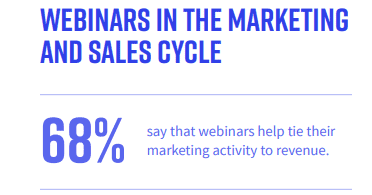
The content of the webinar is as significant as its promotion. While social media content and blog posts rate the highest, webinars make up a substantial portion of the promotion strategy.
Although webinars work across industries, the tech sector sits atop the throne. On24’s report states that 68% of marketers say webinars help them tie their marketing activity to revenue.
With that arises the question of getting people to attend webinars.
4. Emails Drive a High Percentage of Webinar Promotions
E-mails drive 56% of webinar registrations. Wednesdays and Thursdays are the best days to send promotional emails.
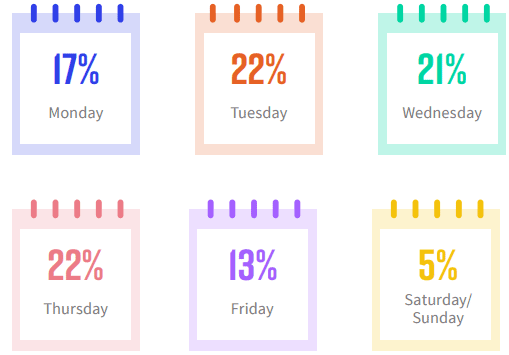
You can increase your reach by collaborating with influencers or other companies and leverage their mailing lists.
5. Most Registrations Are for Long Form Webinars
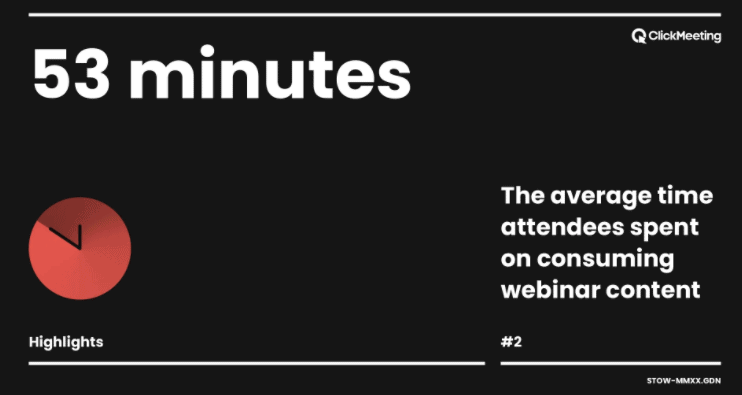
You may think the shorter the duration, the better. Contrary to that, longer webinars attract the most audience. Longer webinars are considered more valuable. According to the State of webinars report, on an average, attendees spend 53 minutes consuming webinar content. On24’s report shows that the average viewing time of attendees is 56 minutes in 2020.
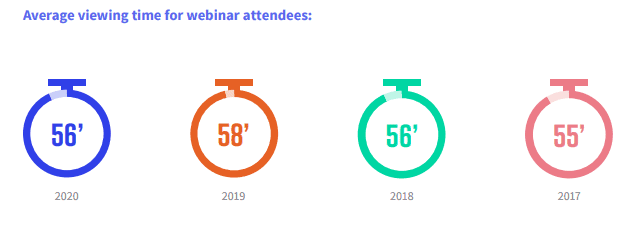
Next, let’s look at the interaction.
6. Q&A Is the Preferred Form Of Interaction
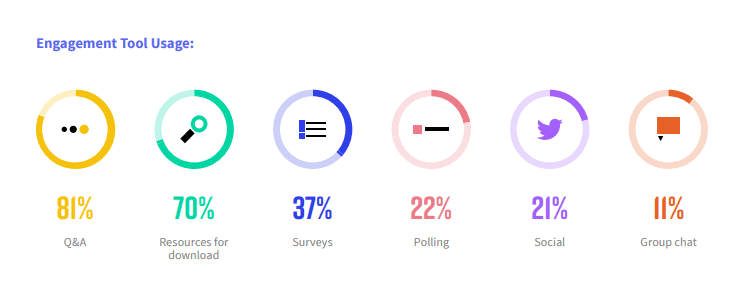
Out of surveys, polls, group chats, and social media, research has shown that Q&A sessions are 81% more effective.
Surveys and resources for downloads are not too far behind, but why stick to one when you can use all of them? Combine these tools to get the best reach out of your webinar.
7. 29% Of Registrations Happen 8-14 Days Before The Webinar
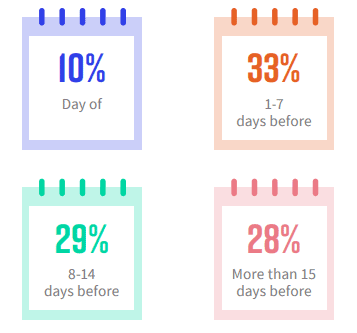
11% of the registrations happen on the day of the webinar. So start your promotion four weeks ahead of the webinar and amp it up as you get closer to the date. Send a last-chance registration e-mail to the people who do not register till the last minute.
8. 55% of Registrants Convert To Attendees
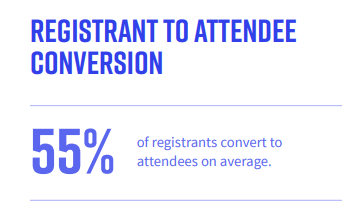
On24’s report suggests 55% of registrants convert to attendees. A conversion rate between 35% and 45% is typically considered to be good. While a drop in attendance rate can be due to bad promotion, sometimes it can indicate that people are just busy.
9. Videos-On-Demand Are Public Favourites
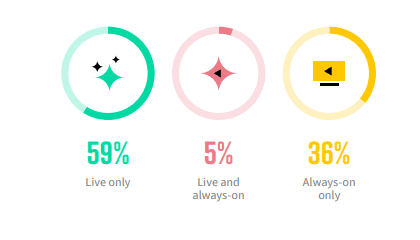
Wouldn’t it be pleasant to have a recording of the webinar to watch at your convenience? 94% of webinar hosts make events available on-demand after the live event (as per the State of Webinar Report 2020).
10. An Average Webinar Costs Between $3000 and $5000
According to My Own Conference, you need about $300 only for your video clips and banners. But the price can vary if you choose to opt for both live and on-demand. It is not a necessity, but it would only make the webinar better. To get the desired results, you’ll need to bear the cost.
Final Thoughts
Webinars are a great tool to inform and educate your prospective buyers. They remain a top content format B2B buyers engage with as per a 2020 DemandGen report.
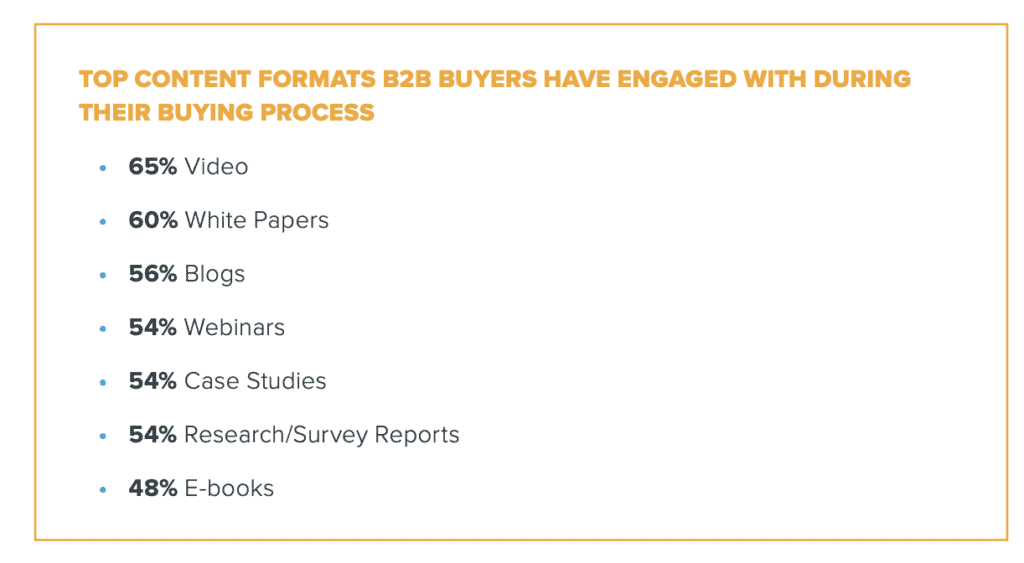
Hopefully, the webinar statistics in this article will help you in framing an effective strategy for leveraging this content format in 2021.
Are there any other webinar stats you want to share? Let me know in the comments below.

